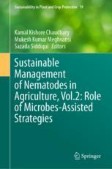Search
Search Results
-
Range-wide population genomics of common seadragons shows secondary contact over a former barrier and insights on illegal capture
BackgroundCommon seadragons ( Phyllopteryx taeniolatus , Syngnathidae) are an emblem of the diverse endemic fauna of Australia’s southern rocky reefs,...

-
Secondary Metabolites
Plants synthesize an enormous array of organic compounds/metabolites, a large number of which are involved in facilitating the basic vital processes...
-
Song of Thrush (Luscinia luscinia) and Common (L. megarhynchos) Nightingales in Allopatric Populations and in the Zone of Secondary Contact in the Ciscaucasia
AbstractWe analyzed frequency, duration and structure of songs of Thrush and Common nightingales in the recently established contact zone in the...

-
Introgression at the emerging secondary contact zone of magpie Pica pica subspecies (Aves: Corvidae): integrating data on nuclear and mitochondrial markers, vocalizations, and field observations
Zones of secondary contact provide a good opportunity to investigate the origin and dynamics of reproductive isolation between related populations....

-
Population genetic analysis reveals secondary contact between Eriocheir sinensis and E. japonica in South Korea
BackgroundThe Chinese mitten crab ( Eriocheir sinensis ) and the Japanese mitten crab ( E. japonica ) of the family Varunidae, which are also critical...

-
Contact-Assisted Threading in Low-Homology Protein Modeling
The ability to successfully predict the three-dimensional structure of a protein from its amino acid sequence has made considerable progress in the...
-
Individual-level patterns of resource selection do not predict hotspots of contact
Contact among animals is crucial for various ecological processes, including social behaviors, disease transmission, and predator–prey interactions....

-
Secondary contact, hybridization, and diversification in Arctic charr (Salvelinus alpinus (L.) species complex) from lakes of the Norilo-Pyasinskaya water system, Taimyr: how many forms exist there?
Arctic charr Salvelinus alpinus (L.) complex has two or more sympatric forms in many lakes representing a subject for discussions on the mechanisms...

-
RNA contact prediction by data efficient deep learning
On the path to full understanding of the structure-function relationship or even design of RNA, structure prediction would offer an intriguing...

-
Associational Effects of Desmodium Intercrop** on Maize Resistance and Secondary Metabolism
Intercrop** is drawing increasing attention as a strategy to increase crop yields and manage pest pressure, however the mechanisms of associational...

-
Protrudin-mediated ER-endosome contact sites promote phagocytosis
During phagocytosis, endosomes both contribute with membrane to forming phagosomes and promote phagosome maturation. However, how these vesicles are...

-
Physical contact stress can trigger larval release in the brooding coral Siderastrea stellata
Abiotic and biotic stressors are known to trigger reproductive activities in several aquatic organisms. In reef environments, physical contact as a...

-
Macroalgae and zoanthids require physical contact to harm corals in Southwestern Atlantic
Space can be limited in reef ecosystems leading to competitive interactions among sessile organisms. Some competitive mechanisms can require physical...

-
Nematicidal Activity of Secondary Metabolites from Soil Microbes
Control of plant-parasitic nematodes (PPNs) has become a complex problem because of their potential for damage and the lack of chemical...
-
Caterpillar movement mediates spatially local interactions and determines the relationship between population density and contact
BackgroundWhile interactions in nature are inherently local, ecological models often assume homogeneity across space, allowing for generalization...

-
Recent Advances in Fungal Secondary Metabolites and Their Applications
Secondary metabolites (SMs) are formed during secondary metabolism in fungi and other organisms and provide a wide variety of applications in various...
-
Activation of Secondary Metabolite Production in Fungi
Fungi can be found in virtually every habitat on earth. Over time, they evolved strategies to survive even the most challenging conditions, leading...
-
Secondary structure of the human mitochondrial genome affects formation of deletions
BackgroundAging in postmitotic tissues is associated with clonal expansion of somatic mitochondrial deletions, the origin of which is not well...

-
Between allopatry and secondary contact: differentiation and hybridization among three sympatric Gentiana species in the Qinghai-Tibet Plateau
BackgroundMountains of the world host a significant portion of all terrestrial biodiversity, and the region of the Qinghai-Tibet Plateau (QTP) stands...

-
Genetic architecture of a pollinator shift and its fate in secondary hybrid zones of two Petunia species
BackgroundTheory suggests that the genetic architecture of traits under divergent natural selection influences how easily reproductive barriers...

